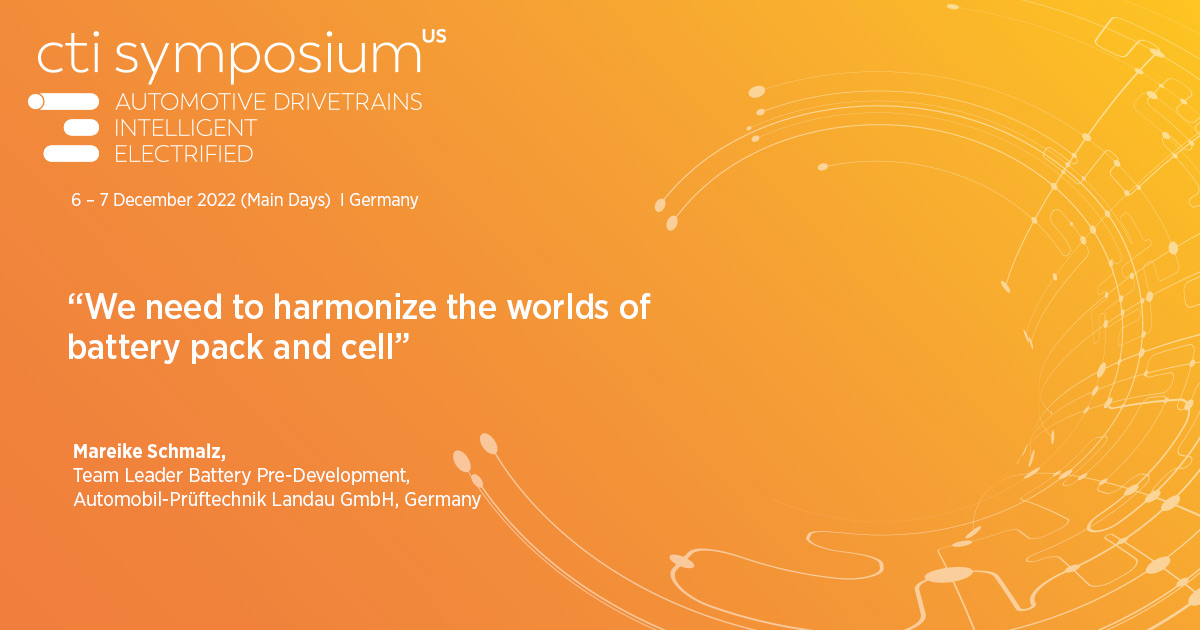
At the CTI symposium in Berlin from 6-7 December, Mareike Schmalz, Team Leader Battery Pre-Development, Automobil-Prüftechnik Landau GmbH, Germany, will speak about “Range vs. fast charging capability – new development tools for solving the optimisation conflict of HV-batteries”.
We had the opportunity to interview Ms. Schmalz beforehand.
At the upcoming CTI event in Berlin, you will talk about optimization conflicts of high-voltage batteries. What are these conflicts?
We see major advancements at all system levels of a battery. The cell is continuously evolving in its chemical composition, stoichiometry, and morphology. The conflict is to combine high energy densities with fast charging capability and safety. In system design, the trend points clearly toward compact cell-to-pack or cell-to-car concepts. As a result, problems and challenges associated with the cell and its integration – electrical, thermal, and mechanical – must now be solved at a system level. The battery becomes a structural element and its development process is increasingly interlinked with that of the overall vehicle.
Another issue you deal with in your work is thermal energy dissipation. What are the challenges in this area?
The battery releases heat during operation, especially under high electrical loads such as fast charging. To ensure safe operation and avoid derating due to overheating, the heat must be dissipated in a targeted manner. The concept of immersed cooling is now gaining ground. In contrast to the established indirect cooling, the cooling fluid flows directly around the battery cell. This offers a highly efficient heat dissipation but challenges lie in the system design, sealing concept, and formulation of a suitable dielectric fluid. Issues of material compatibility are likewise a key challenge.
From your view, which will be the most important development fields for traction batteries in the coming years?
At the system level, cell-to-pack development will be a major task. At the cell level, work will continue on improvements to cell chemistry. Great expectations are placed on solid-state batteries. Key development work lies in harmonizing the two worlds of the battery pack and cell and achieving a clean understanding of their interdependency. As an engineering service provider, APL is well acquainted with the diverse developments in the market as we work from cell chemistry up to the whole pack on fast charging, thermal management, safety, and operating strategies, to name a few.
Thank you for these insights, we are looking forward to your speech in Berlin.
Questions: Gernot Goppelt
